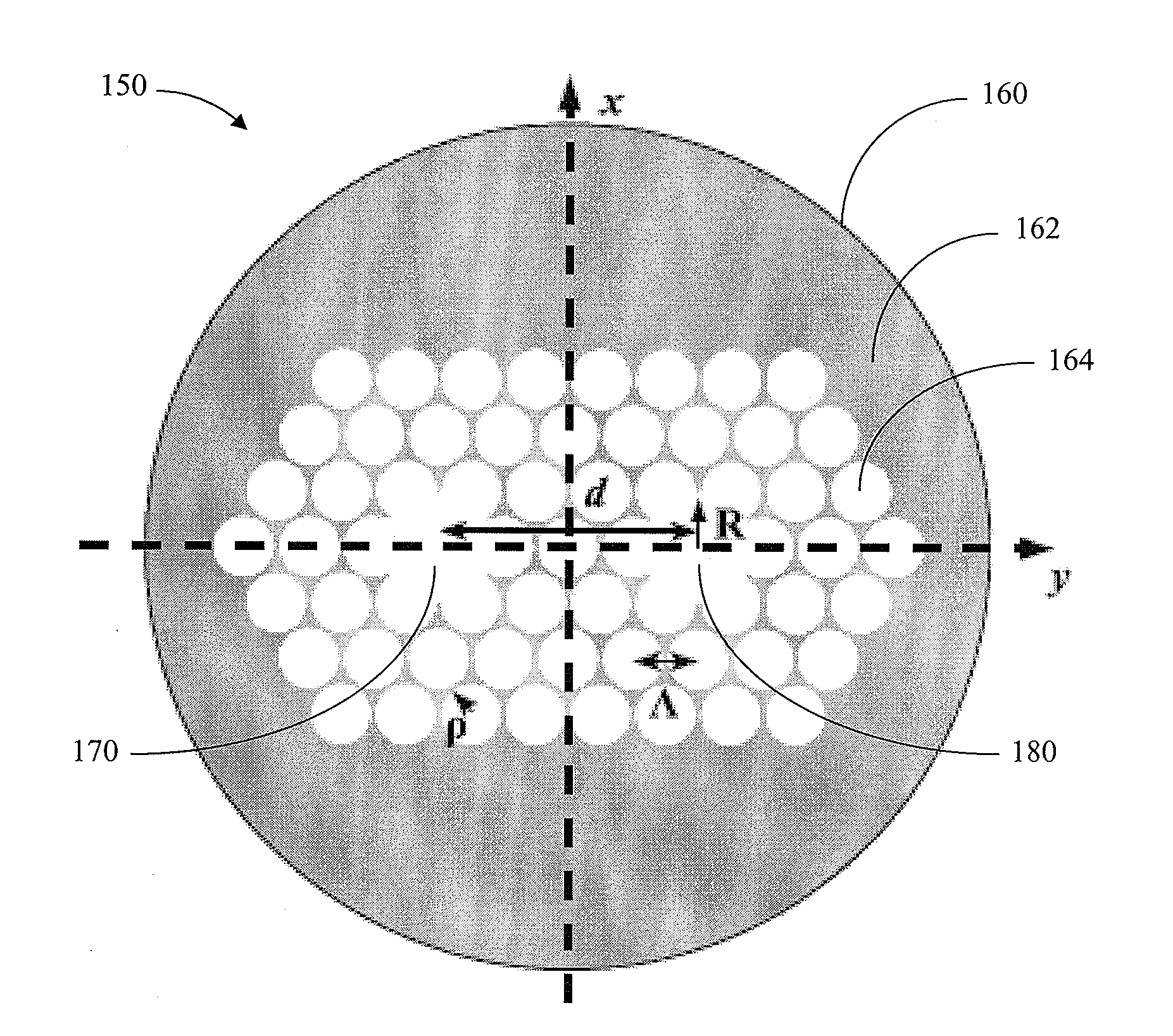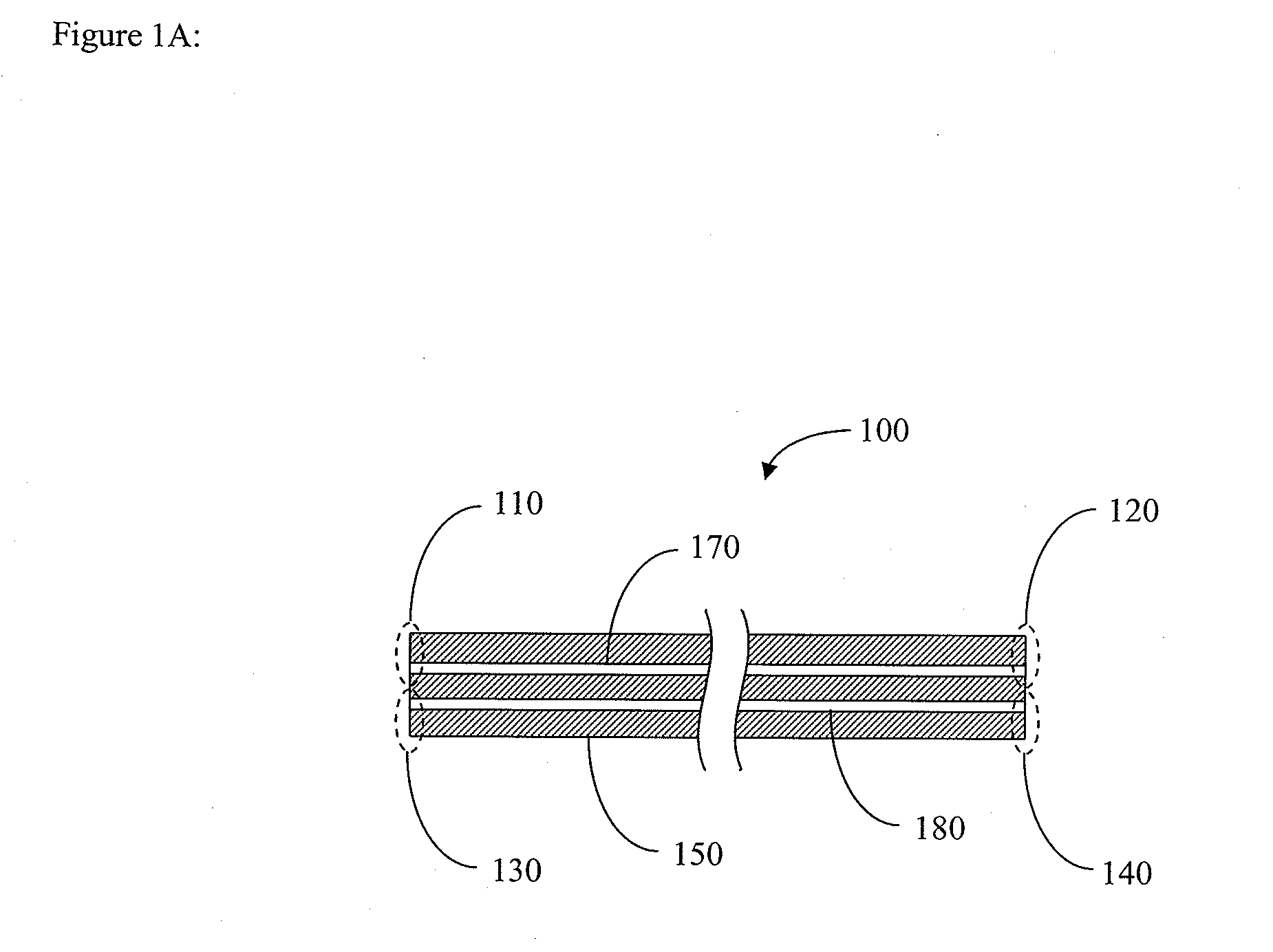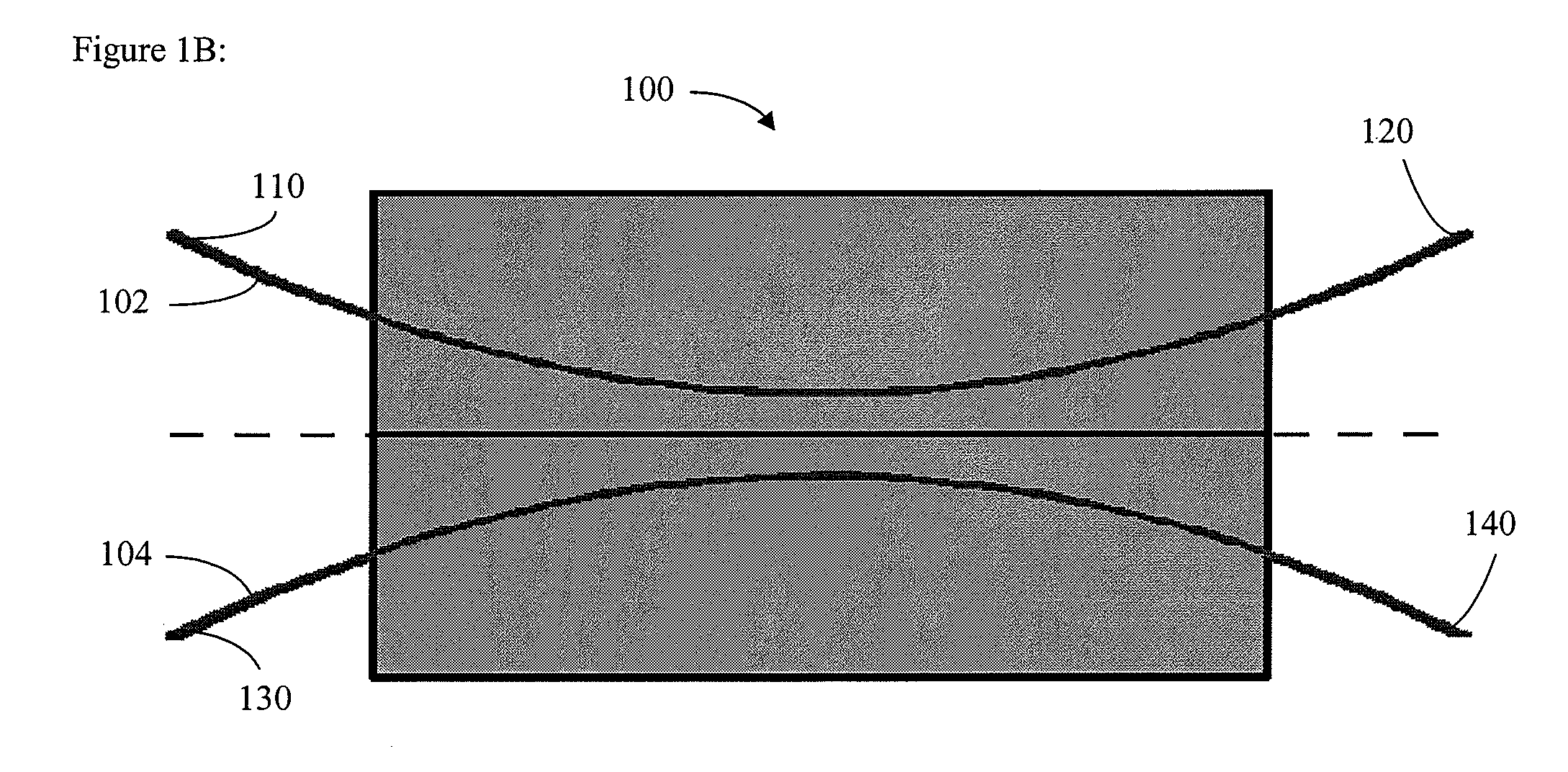Multiple-core photonic-bandgap fiber with coupling between the cores
- Summary
- Abstract
- Description
- Claims
- Application Information
AI Technical Summary
Problems solved by technology
Method used
Image
Examples
Embodiment Construction
[0031]FIG. 1A schematically illustrates an example optical coupler 100 in accordance with certain embodiments described herein. The optical coupler 100 comprises a first optical port 110, a second optical port 120, a third optical port 130, and a fourth optical port 140. The optical coupler 100 further comprises a two-core photonic-bandgap fiber (PBF) 150 comprising a cladding 160, a first core 170, and a second core 180. The first core 170 is optically coupled to the first optical port 110 and to the second optical port 120. The second core 180 is optically coupled to the third optical port 130 and to the fourth optical port 140. In certain embodiments, the first optical port 110 comprises a first portion of the first core 170, and the second optical port 120 comprises a second portion of the first core 170. In certain embodiments, the third optical port 130 comprises a first portion of the second core 180, and the fourth optical port 140 comprises a second portion of the second co...
PUM
 Login to View More
Login to View More Abstract
Description
Claims
Application Information
 Login to View More
Login to View More - Generate Ideas
- Intellectual Property
- Life Sciences
- Materials
- Tech Scout
- Unparalleled Data Quality
- Higher Quality Content
- 60% Fewer Hallucinations
Browse by: Latest US Patents, China's latest patents, Technical Efficacy Thesaurus, Application Domain, Technology Topic, Popular Technical Reports.
© 2025 PatSnap. All rights reserved.Legal|Privacy policy|Modern Slavery Act Transparency Statement|Sitemap|About US| Contact US: help@patsnap.com



